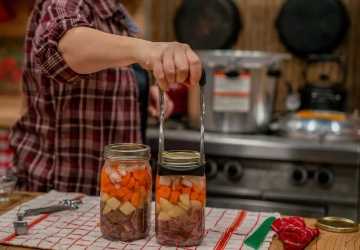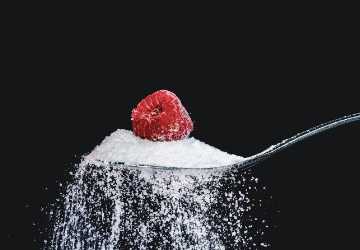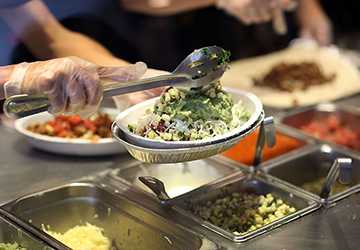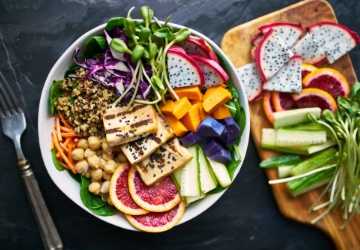Top Techniques for Preserving Summer Harvest
During summer, fresh produce from gardens and markets bursts into bloom. Preserving summer produce is essential to enjoying those flavors year-round. Here, we'll take a look at various food preservation techniques to help you maximize your seasonal harvest. These methods ensure that you can enjoy the essence of summer, even during the colder months.
The Need to Preserve Summer Produce
Preserving fruits and vegetables allows you to:
- Reduce food waste
- Save money by buying in bulk during the peak season
- Enjoy seasonal flavors year-round
- Maintain a healthy diet with homemade products
Preserving: Traditional Methods
Preserving in a Water Bath
Water bath canning is great for high-acid foods like fruits, tomatoes, and cucumbers. Here's how it's done:
1. Sterilize jars and lids.
2. Fill jars with prepared produce and liquid (syrup, water, or juice).
3. Place jars in a water bath canner and make sure they are at least 1 inch underwater.
4. Boil and process for the time specified in the recipe.
5. Remove the jars and allow them to cool.
Pressure Canning
Pressure canning is essential for low-acid foods like vegetables, meats, and beans. Follow these steps:
1. Sterilize jars and lids.
2. Fill jars with prepared fruits, vegetables, and liquids.
3. Place jars in the pressure canner and secure lids.
4. Apply heat to build up pressure and process for the time specified in the recipe.
5. Allow the preserver to cool and release pressure before removing the jars.

Freezing: Efficient and Practical
Freezing is one of the simplest methods of food preservation. It preserves the nutritional value and flavor of fruits. Here’s how it’s done:
1. Blanch vegetables (boil briefly, then cool in ice water) to stop enzyme activity.
2. Dry fruits and vegetables thoroughly. 3. Place in freezer bags or containers, removing as much air as possible.
4. Include date and contents.
Drying: Removes Moisture to Extend Shelf Life
Drying is an effective food preservation technique that removes moisture from produce and prevents the growth of bacteria, yeast, and mold. There are several drying methods:
Air Drying
Air drying is a simple method that works well for herbs and some fruits:
1. Tie herbs into small bundles and hang upside down in a dry, well-ventilated area.
2. Slice fruit and place on a rack in a dry, warm place.
Drying in an Oven
This method works for most fruits and vegetables:
1. Slice produce.
2. Place on a baking sheet and set the oven to low (140°F or 60°C).
3. Leave the oven door slightly open to allow moisture to escape.
4. Dry until tough or brittle.
Dehydrator
Dehydrators provide a controlled drying environment:
1. Arrange sliced produce on dehydrator trays.
2. Set the dehydrator to the recommended temperature for your produce.
3. Dry until desired texture is achieved.
Fermentation: An Outdated Method
Fermentation is an ancient food preservation technique that enhances flavor and incorporates beneficial probiotics. Common fermented foods include sauerkraut, kimchi, and kimchi. Here's the basic process:
1. Wash and chop the produce.
2. Add salt (and sometimes water) to make a brine.
3. Pack the produce tightly into a fermentation container.
4. Weigh the produce so it stays in the brine.
5. Cover and ferment at room temperature for a few days to a few weeks, depending on the recipe.
Pickling: Spicy, Fresh and Flavorful
When pickling, the produce is preserved in vinegar or brine. Here's a simple insert:
1. Prepare the produce, wash and chop.
2. Make the pickling liquid with vinegar, water, salt and spices.
3. Pack the produce into sterilized jars and pour boiling hot pickling liquid over them.
4. Seal the jars and allow them to cool, then store them in the refrigerator or process them in a canner to extend shelf life.
Storing Seasonal Fruits and Vegetables: Best Practices
Proper storage is essential to extending the shelf life of fresh fruits and vegetables. Here are some tips for storing seasonal fruits and vegetables:
Cool, Dark, Dry
Many fruits and vegetables stay in a cool, dark, dry environment for longer. Examples of this are:
- Tubers
- Allium family
- Onion family
- Winter squash
Cooling
Some products require refrigeration to maintain freshness:
- Berries
- Leafy vegetables
- Cruciferous vegetables
- Radishes
Root Cellars
Root cellars are a proven way to store seasonal fruits and vegetables:
- Pome fruits
- Cabbage family
- Beetroot
- Radishes
Vacuum Sealing: Extending Freshness
Vacuum sealing removes air from packaging, reducing oxidation and extending shelf life. Here’s how it’s done:
1. Place the product in vacuum bags.
2. Use a vacuum sealer to remove air and seal the bag.
3. Depending on the product, store the product in the fridge, freezer or pantry.
Delicatessen and Salting: Preserving Meats
Delicatessen is an innovative food preservation technique, the careful art of salting and aging meats, which can be adapted to summer produce, such as tomatoes and fruit, to create unique, long-lasting products.
Preserving Summer Produce with Charcuterie Techniques
1. Dry curing: decorate produce with salt and spices, then air dry.
2. Wet curing: dry produce in a salt solution.
Examples
- Salt-cured tomatoes: enhance umami flavor, perfect for sauces and salads.
- Fruit leather: puree fruit and dry in a dehydrator or oven to create chewy, nutritious candies.
Preserving with Saccharin: Candies and Syrups
Preserving with saccharin, like other activities such as making candies and syrups, can turn excess fruit into a delicious, long-lasting treat.
Production of Fruit Candies
1. Prepare a thick syrup (2:1 ratio of sucrose to water).
2. Boil fruit pieces in syrup until translucent.
3. Dry fruit pieces and sprinkle with additional sugar.
Production of Fruit Syrups
1. Boil fruit with equal parts sugar and water.
2. Strain syrup, bottle and sterilize for long-term storage.
Application Areas
- Fruit candies as snacks or dessert decorations
- Syrups for beverages, desserts and baking

Alcohol Preservation: Infusions and Extracts
Storing seasonal fruits and vegetables in alcohol not only prolongs their shelf life, but also creates delicious infusions and extracts for culinary and medicinal uses.
Alcohol Preservation Process
1. Choose a spirit (vodka, brandy, or rum).
2. Soak clean, dry produce in alcohol.
3. Store in glass jars and store in a cool, dark place for several weeks.
4. Strain the flavored alcohol and bottle.
Uses
- Homemade extracts (e.g., vanilla, citrus)
- Flavored spirits for cocktails and cooking recipes
Conclusion
Enjoy the essence of summer all year long with these preserving tips. Whether you choose to can, freeze, dry, ferment, pickle, or vacuum seal, each method offers unique benefits for preserving summer produce. With proper storage, you can ensure seasonal fruits and vegetables stay fresh and delicious. Start canning today and enjoy the taste of summer wherever you go!







